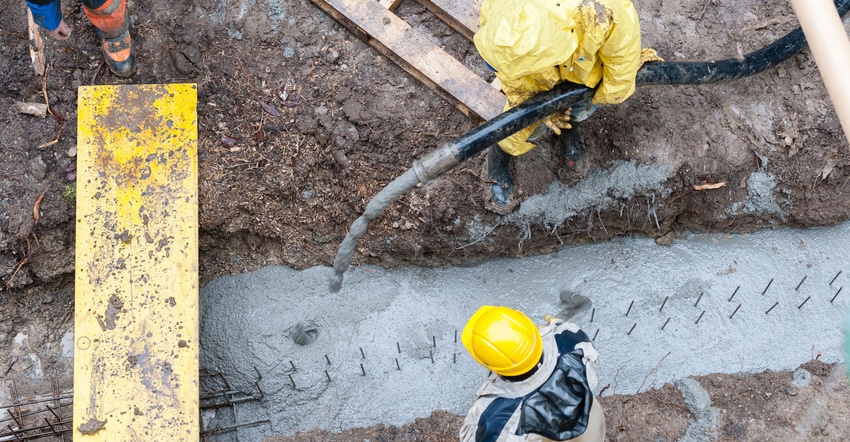What Every Contractor Should Know About Rain and Concrete
Concrete pros need to prepare for unexpected rain and look for these problems if drying concrete is drenched.

Rain and concrete construction don’t mix, but sometimes unexpected precipitation on the jobsite is unavoidable.
Guidance for dealing with rain during the placement of troweled slabs and broomed concrete is sparce, but there are ways to prepare and workable solutions if the product is drenched, according to Ron Kozikowski, a materials and construction engineer with New Hampshire-based North Starr Concrete Consulting.
Kozikowski, who has roughly two decades of industry experience, provided expert insight during a “Planning, Placing, Protecting and Curing in Adverse Conditions” session at the American Concrete Institute’s recent convention in San Francisco.
The first thing Kozikowski said he usually does on a jobsite when rain is in the forecast is talk through a plan with the crew.
He told attendees some rain damage can be undone, but it depends on when the rain happened in the process and for how long the event lasted. He said if standing water isn’t finished into concrete, the damage is usually superficial as long as the rain event wasn’t especially severe.
Kozikowski said he compares rainwater to bleed water.
“Water is going to want to get forced out to the surface because it’s the lightest component (in concrete),” he said. “With bleed water, we just want to make sure that we don’t finish it in the concrete. We don’t want to mix it in the concrete, and we have to get rid of it before we start finishing.”
Estimating rain damage to a broomed concrete slab depends heavily on how much the concrete has set before it was exposed to rain, according to Kozikowski. And if it is damaged, repair can be difficult.
“It’s hard to remove concrete from a broom surface without affecting the surface finish,” he said. “But if you have a troweled slab then we have a dormancy period and there’s time to get the water off before finishing starts.”
When should you worry?
The most unfavorable time for rain, as far as a concrete contractor is concerned, is during placement.
“(It) can cause the most damage then because (it) can impact water-cement ratio,” he said. “That’s the only time you’d really be mixing water into the concrete.”
Strength and durability can be negatively impacted if the water-cement ratio is altered too much during placement, according to Kozikowski.
If rain occurs during a troweled slab’s final finishing, he said that also opens the door to significant damage because water is being actively worked into concrete, altering the water-cement ratio.
During the dormancy period, after concrete is initially placed and as it is stiffening, there is a window where the slab can withstand rain, provided that the rain event isn’t significant.
“We probably have a couple of hours for it to start and stop raining and keep it into the curing period,” he said.
If a troweled slab has reached the final setting stage and it’s stiff enough that water no longer impacts the finish, Kozikowski said, “it’s probably not a bad thing for it to rain then.”
Should you cover the slab?
Kozikowski said using plastic to cover a slab can be difficult because plumbing and rebar, if in the concrete, can puncture the plastic.
He also said plastic can create a greenhouse effect that raises temperatures and shortens the concrete’s dormancy period. “The last thing you want is for your dormancy period to get shortened,” he said.
A shorter dormancy period would cause concrete to set quicker, which would reduce the amount of time available to remove water from a slab’s surface after a rain event, Kozikowski said.
Nevertheless, Kozikowski said allowing it to fall on the surface during the dormancy period can have a short-term benefit.
“If you let the rain fall on the concrete then it’s going to cool down the surface, and cooling down the surface gives you a little bit of extra time to get the water off,” he said. The only time Kozikowski recommends using plastic is when rain is predicted to be very intense or if there is a risk of the concrete washing out, which he said is possible with ramp and parking garage construction.
About the Author(s)
You May Also Like




